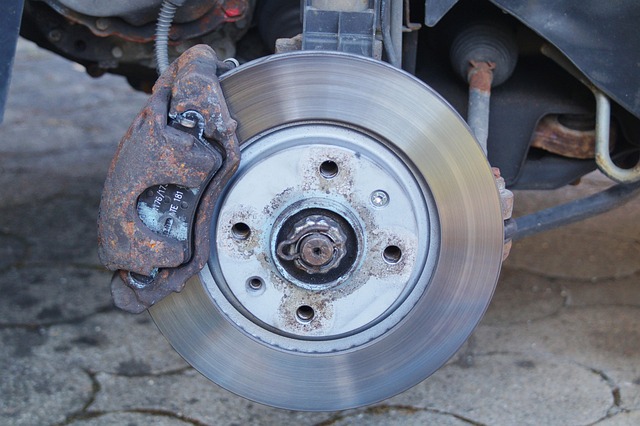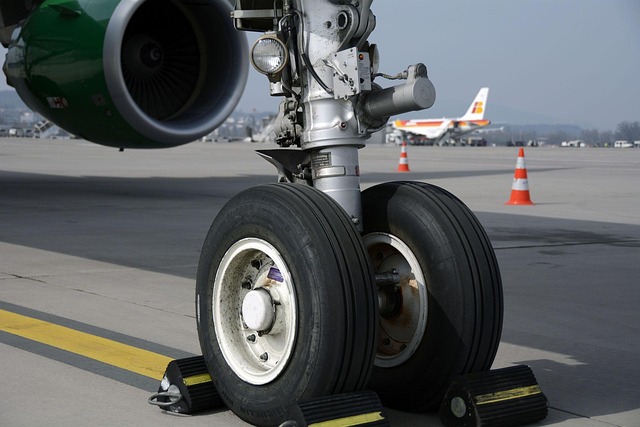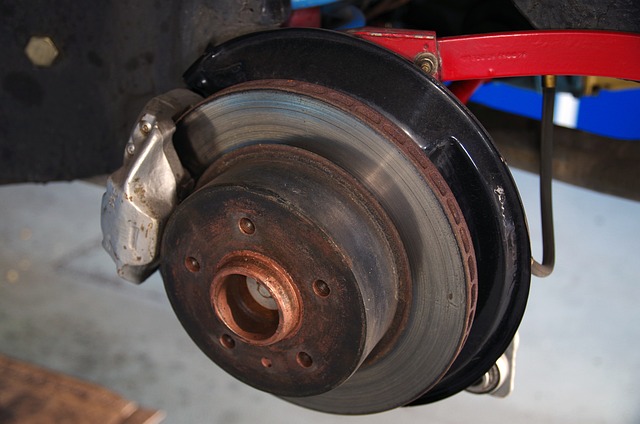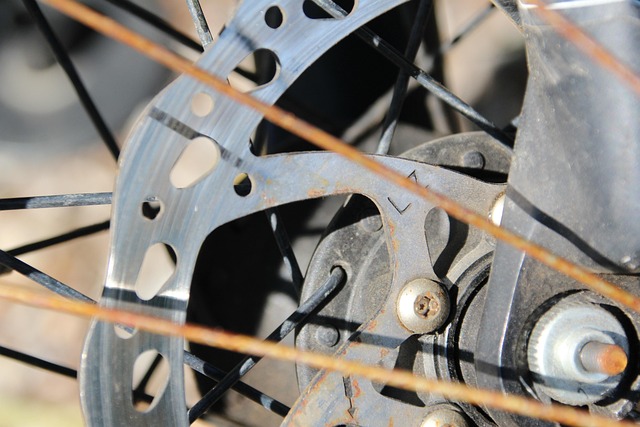Leaky brake lines pose significant safety risks across all vehicle types. Regular maintenance, focusing on pad condition and driving needs, prevents leaks through component upgrades or rebuilt calipers. Choosing high-quality, compatible parts ensures optimal braking efficiency and peace of mind. For select models, a step-by-step approach to fixing leaks includes locating sources, inspecting, replacing as needed, flushing brake fluid, and testing performance. Regular inspections and understanding wear patterns are vital for master cylinder maintenance, extending component lifespans through informed decisions.
“Are you tired of dealing with leaky lines in your brake system? These leaks can not only cause significant damage but also compromise your vehicle’s safety. This comprehensive guide will help you understand the root causes, from identifying common sources like worn-out seals and damaged hoses to selecting the right replacement parts for your select brake systems. We’ll walk you through a step-by-step fix and offer maintenance tips to prevent future leaks.”
- Understanding Leaky Lines in Brake Systems
- Identifying Common Sources of Leaks
- Select The Right Replacement Parts
- Step-by-Step Guide to Fix Leaks
- Maintenance Tips to Prevent Future Leaks
Understanding Leaky Lines in Brake Systems

Leaky lines in brake systems are a common issue that can significantly impact their performance and safety. These leaks, often caused by worn-out seals or corrosion, lead to fluid loss, resulting in reduced braking power and, in extreme cases, complete failure of the braking system. This is particularly concerning in vehicles like semi-trucks, where reliable brake maintenance is crucial for ensuring the safety of both drivers and other road users.
When it comes to understanding leaky lines, it’s important to consider different types of brake systems, including those in conventional cars and electric vehicles with regenerative braking mechanisms. While traditional hydraulic systems rely on liquid pressure to activate brakes, electric vehicle regenerative braking uses a complex network of sensors and electronics to capture and convert kinetic energy back into electrical energy during deceleration. Regular maintenance, such as adhering to semi-truck brake maintenance schedules, is essential for preventing leaks in both cases. Custom brake upgrades for sports cars or other high-performance vehicles can also be affected by leaky lines, emphasizing the need for thorough inspection and timely repairs across various vehicle types.
Identifying Common Sources of Leaks

Leaky lines are a common issue in many vehicles, and identifying their sources is the first step towards fixing them. One of the primary areas to check when dealing with leaks is the brake system, specifically the front brake pads and calipers. Over time, these components can wear out, leading to small cracks or damage that cause fluid leakage. Regularly examining your vehicle’s brake pads for signs of wear, corrosion, or damage is a crucial part of maintenance, especially in light duty trucks.
When it comes to fixing leaky lines, the solution often involves replacing worn-out parts or upgrading to newer models. Front brake pad replacement tips suggest checking the pad thickness and condition regularly. If the pads are thin or show signs of severe wear, it’s advisable to replace them immediately to avoid further damage. Moreover, considering light duty truck brake upgrades can significantly enhance stopping power and overall performance, especially if you’re often driving in challenging conditions. Rebuilt brake calipers for sale offer a cost-effective solution for those looking to repair rather than replace, ensuring your vehicle’s safety and efficiency on the road.
Select The Right Replacement Parts

When it comes to fixing leaky lines, especially in brake systems, selecting the right replacement parts is paramount. It’s not just about finding compatible components; you must also ensure they meet current brake safety standards and regulations. This involves carefully considering both the physical dimensions and performance characteristics of each part, such as rear brake rotor replacement cost and break pad wear indicator installation, to guarantee optimal braking efficiency and safety.
Choosing the right select brake systems necessitates a thorough understanding of your vehicle’s make and model, along with adherence to manufacturer recommendations. Quality parts that have been tested rigorously under various conditions will not only fix leaky lines effectively but also prolong the life of your brakes, thereby enhancing your driving experience and peace of mind on the road. Remember, proper maintenance, including regular inspection and replacement of critical components, is key to upholding brake safety standards.
Step-by-Step Guide to Fix Leaks

Fixing leaky lines, particularly those related to your vehicle’s brake system, is a crucial task that can enhance safety and performance. Here’s a step-by-step guide focusing on select brake systems:
1. Identify the Leak: Start by locating the source of the leak. Check for wet spots around the brake pads, rotors, master cylinder, and lines. A common culprit is worn or damaged front brake pad replacement tips, which can cause fluid to drip.
2. Inspect and Replace as Needed: If the leak originates from the pads, check their condition. Worn or cracked pads should be replaced immediately. This could also involve inspecting the calipers for any damage or corrosion. For the master cylinder, consider a master cylinder repair vs. replacement based on its condition and your budget.
3. Address Leaks in Lines: Inspect the brake lines for cracks, bulges, or corrosion. If any are found, they must be replaced. Keep in mind that electric vehicle regenerative braking systems may have unique line requirements, so ensure compatibility if you’re modifying these components.
4. Flush the Brake Fluid: After repairing or replacing faulty parts, flush your brake fluid to remove any air bubbles and ensure optimal performance. This step is vital for maintaining consistent braking power.
5. Test and Adjust: Following repairs, test your brakes gently in a controlled environment. Ensure they apply even pressure and work smoothly. Make adjustments as needed until you achieve the desired braking performance.
Maintenance Tips to Prevent Future Leaks

Regular maintenance is key to preventing future leaks in your vehicle’s brake system. One of the primary areas to focus on is the select brake systems, which include components like the master cylinder and its associated parts. A simple yet effective practice is to regularly inspect these systems for any signs of wear or damage. This proactive approach can help identify potential issues early on, preventing small leaks from becoming bigger, more costly problems.
When it comes to maintaining your brake system, understanding when to repair versus replace is crucial. For instance, if you notice a gradual decrease in braking performance or the presence of excessive brake dust, these could be indicators that a master cylinder repair or replacement might be necessary. On the other hand, employing effective brake dust reduction techniques can help extend the lifespan of your components. Additionally, familiarizing yourself with the fundamental vehicle brake system design principles will empower you to make informed decisions regarding maintenance and repairs.
Leaky lines are not just an inconvenience; they’re a safety hazard. By understanding the common sources of leaks in brake systems and following a step-by-step guide for repairs, you can effectively fix these issues. Always remember to select the right replacement parts tailored for your specific brake system. Regular maintenance is key to preventing future leaks, ensuring the longevity and safety of your vehicle’s braking capabilities.
